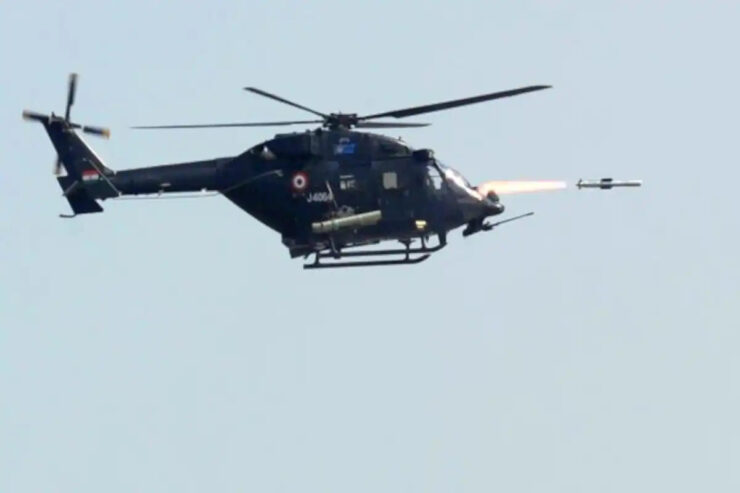
New Delhi: The successful flight test of an anti-tank guided missile – Helina – from an advanced light helicopter (ALH) at high altitude on April 11, ensured that the Indian defence arsenal will have more firepower now.
The trial was conducted in Pokhran and carried out jointly by a Defence Research and Development Organisation (DRDO) team, along with the Indian Army and Air Force. The test was part of user validation trials of the third generation ‘fire and forget’ class missiles developed by the Defence Research and Development Organisation (DRDO).
The flight trials were conducted from an indigenously developed Advanced Light Helicopter (ALH) and the missile was fired successfully, engaging a simulated tank target in the Pokhran desert ranges. The missile is guided by an Infrared Imaging Seeker (IIR) operating in the ‘lock on before launch’ mode.
“In continuation to validation trials conducted at Pokhran, proof of efficacy at high altitudes paves the way for its integration on ALH. The trials were witnessed by senior Army commanders and senior scientists of DRDO,” said a press statement from the Ministry of Defence.
The Helina is a third generation fire and forget class anti-tank guided missile (ATGM) system mounted on the Advanced Light Helicopter (ALH). It has been developed by the Defence Research and Development Laboratory (DRDL), Hyderabad under the Missiles and Strategic Systems (MSS) cluster of the DRDO.
According to DRDO scientists, the Helina has an operational range of 500 m to 20 km and can engage targets both in direct hit mode as well as top attack mode. Additionally, the system has all weather day and night capability and can defeat battle tanks with conventional armour as well as explosive reactive armour. The missile is guided by an Infrared Imaging Seeker (IIR), which makes it one of the most advanced Anti-Tank Weapons in the world. While the Helina is being inducted into the Indian Army, its variant, referred to as Dhruvastra, is being inducted into the Air Force.
As India continues its push to self-reliance in the defence manufacturing sector, the successful flight test of Helina gains more significance as Helicopter launched anti-tank guided missiles figure on the import ban list.
Defence Minister Rajnath Singh congratulated the DRDO and the Indian Army for the achievement.








